

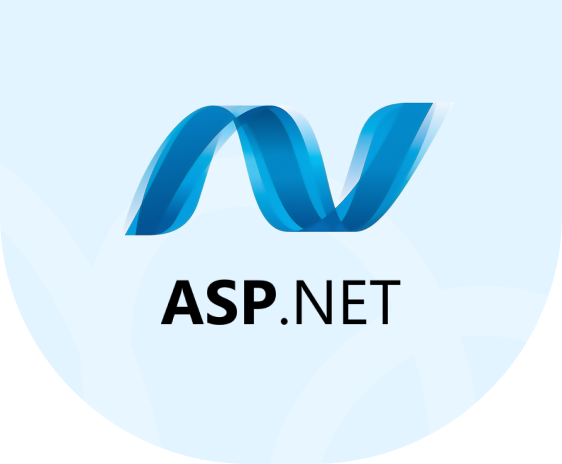
As an ASP.NET software development company, we help our clients build web, mobile, and desktop applications that represent their brands. Our mastery of language and its updates ensured the successful completion of custom solutions. Being solution-driven, we promise to automate workflows, modernize legacy systems, and enable structured data management. We help enterprises build custom net application development solutions through net software development services and net development consulting with necessary customization and complete reliability, regardless of their size or business segment.
At SPEC INDIA, we recognize the growing adoption of the .NET platform in this highly competitive market. Over the years, our skilled .NET developers, designers, and testers have been dedicated to delivering the finest .NET solutions and services to our valued customers.
Our .NET development company possesses long-standing industry expertise and market understanding to guide your business in achieving its desired goals with our .NET development services. We at SPEC INDIA have a dedicated .NET development team of proficient consultants to assist you with our .NET software development services 24/7, providing ongoing support.
Overcome unique business growth challenges to craft unique custom asp solutions and ASP .NET development solutions that are aligned to match the needs of your specialized development business goals. As a best-in-class .NET development company, we provide top-notch custom .NET development solutions.
Along with boosting performance, you can strengthen the security of your legacy applications by updating them to the latest technology, thereby enhancing security. Our seasoned .NET developers ensure smooth, secure, and reliable migration of your legacy system to the latest .NET version, retaining the features and functionalities.
We have over 20 QA testers well-versed in performing all types of testing, including performance, usability, security, and exploratory testing. Connecting with our QA team ensures cost reduction through its skilled resources and proprietary Integrated Manual and Automated Testing (IMAAT) approach. You can expect flawless delivery of your digital platform and boast about friction-free software.
Our maintenance and support services include keeping your digital platform secure, up-to-date, and high-performing. Count on our .NET developers to fix all bugs, enhance performance, secure the environment, and continually upgrade the platform versions. We undertake round-the-clock monitoring and issue resolution, fine-tuning, modernizing legacy systems, and enhancing features. So, wait no more and connect with us now.
Address cross-platform development needs with the most suitable .NET framework: .NET Core. Partner with SPEC INDIA to leverage the web services, cloud-native solutions, and custom ASP.NET Core and asp.net core development services. Offered by some of the top dot net talents to develop high-performance and reliable .NET solutions.
Enhance performance, security, web and mobile access, and more by reviving legacy applications and converting them into web apps within our .NET application development and .NET app modernization services. With our years of experience as a renowned dot net software development company, we are skilled to increase the value of your old apps through performance optimization by utilizing the latest tech stack.

Our dedicated .NET developers deliver custom .NET development solutions using versatile, cross-platform, and modern .NET frameworks.
Successor to Classic ASP - Microsoft's first server-side scripting language - ASP.NET was released in 2002. It is an open source on GitHub, free, cross-platform, and a subset of the .NET Framework and built on the CLR (Common Language Runtime). This web application framework supports languages like VB.Net, C#, J#, Jscript.Net, etc. It is used to build dynamic web-based application like web pages, REST APIs, and microservices that runs on Windows, Linux, macOS, and Docker.
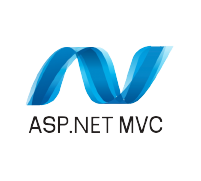
Developed by Microsoft, ASP.NET MVC is a lightweight, highly testable, open-source web framework based on Model-View-Controller (MVC) architecture. An alternative to ASP.net web forms, it is used by developers to build web applications. It enables developers to use jQuery, HTML, CSS, JavaScript, etc to develop web apps and websites. Further, it offers support for test-driven development and various existing ASP.NET features.
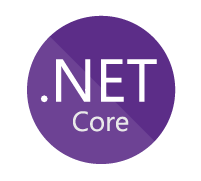
A new version of .NET Framework, .NET Core is a free, open-source, general-purpose development platform maintained by Microsoft. It is a lightweight, modular, and flexible general-purpose development platform that runs on Windows, macOS, and Linux operating systems. It comprises runtime, a set of libraries, and a development environment. .NET Core supports multiple programming languages such as C#, F#, and Visual Basic programming language as well as modular architecture.

Built on ASP.NET Technology, WebForms is used to create dynamic web applications and websites. This event-driven programming language enables rapid development by offering various rich server controls to the developers. The web applications built by WebForms look and feel similar to Windows forms through UI elements.
Developed by Microsoft led by Anders Hejlsberg and originally titled COOL (C-like Object Oriented Language), C# is a simple, modern, general-purpose, object-oriented programming language (OOP). It is approved as a standard by European Computer Manufacturers Association (ECMA) and International Standards Organization (ISO). It holds syntactically with Java. It is used to develop mobile apps, desktop apps, cloud-based services, websites, enterprise software, and more.

Based on ASP.NET, Razor is a server-side markup language or markup syntax designed to develop web apps. It enables the developer to the logical (conditional) insertion of C# code or server-based code into webpages. The developer uses the markup syntax to create dynamic web content and a wide range of apps.
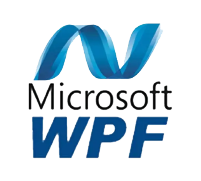
Formerly known as Avalon GUI framework, Windows Presentation Foundation is a UI (user interface) framework used to develop WPF desktop applications, desktop client applications, and more. This framework uses a vector-based rendering engine enabling the developers to rich user interfaces rich with colors, animations, lesser complexity, and more. Microsoft's latest approach to a GUI framework, this framework empowers the UIs to be scalable, resolution-independent, faster, and more.

Developed by Microsoft, XAML is a declarative markup language to create user interfaces or visible UI elements for mobile and Windows apps. It stands for eXtensible Application Markup Language. Introduced as part of the .NET Framework 3.0, this markup language uses the XML format for elements and attributes for describing a GUI.
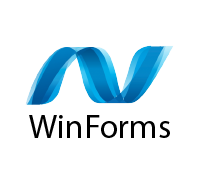
Windows Forms Applications (also termed WinForms) is a Graphical User Interface (GUI) class library that offers a rich set of controls. This class library is used to develop various types of applications apart from desktop client apps for Windows. It makes the development by offering drag-and-drop controls onto a Windows Form. Further using code written in .NET languages like C#, VB.NET, etc, developers can modify the components.

Launched by Microsoft in 2007, Silverlight is a browser plug-in that developers can use to develop Rich Internet Applications (RIA). This XAML-based technology is considered to be a subset of WPF. This browser plug-in supported several browsers and holds similarities to Adobe Flash. Powered by the .NET framework, this free plug-in can be run on run on different web browsers and operating systems.

AvalonDock is a stable open-source WPF controls library. The developers use it to create a docking layout system with WPF Document and Tool Window layout container. This .NET library is used by the developers to arrange documents, a series of WPF/WinForms controls, and tool windows into a docking layout. To make the layout dockable the developers have to wrap controls within the AvalonDock’s controls.
NoSQL database offers a mechanism for storage and retrieval of data using documents rather than relational tables. NoSQL databases are categorized differently based on the formats. NoSQL works well for unstructured or very large data objects. We work with MongoDB, a popular NoSQL database with a document data model for faster, flexible data solutions.

MySQL is a free and open-source relational database management system suitable for data warehousing needs and large online transaction processing (OLTP). Boost performance and achieve agility, reliability, and uptime with the MySQL platform. MySQL is one of the widely-used databases and meets almost all the requirements of today’s businesses.
Oracle SQL is a multi-model database management system developed and maintained by Oracle Corporation. It is used for running data warehousing, online transaction processing, and database workloads. Oracle SQL offers easy and robust architecture for accessing, maintaining, and refining data.

PostgreSQL is a powerful, open-source RDBMS offering extensibility, advanced features, and SQL compliance. We work with PostgreSQL to address your data warehouse and data storage needs with its robust features such as stability, high levels of resilience, integrity, and accuracy.
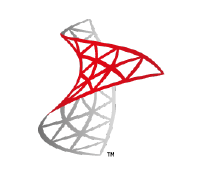
Microsoft SQL is a relational database management system developed by Microsoft. It is a database server primarily used for storing and retrieving data. Different editions of Microsoft SQL are being used by different users and enterprises of varying sizes to meet their database needs
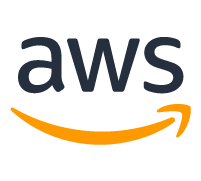
We work with leading and widely-used cloud computing services that power a large number of businesses across the world. AWS offers a highly reliable, scalable, and low-cost infrastructure through various models and on-demand cloud computing platforms based on a pay-as-you-go pricing structure.

Azure, a cloud computing service from Microsoft helps organizations save costs, and build secure, future-ready cloud solutions. Microsoft Azure offers a range of products and services to set up a cloud environment and modernize applications with advanced capabilities to manage data, infrastructure, and workloads.

Google Cloud Platform offers reliable, high-performance, and scalable infrastructure to build, deploy, and scale apps, websites, and services. GCP is a popular cloud service provider providing flexible infrastructure, scalability, security, powerful analytics, and easy deployment to modernize and transform businesses.

Snowflake offers a data warehouse as a service that allows enterprise users to store and analyze data using cloud-based software. Snowflake is a popular data platform offering a wide range of services to meet the growing demands of organizations to become data-driven. SPEC INDIA’s data warehousing services leverage Snowflake to deliver the best result possible.
Selenium is an open-source project offering a range of software testing tools and libraries. It is the automated testing software for testing web applications across different web browsers. Selenium automation testing service offered by SPEC INDIA covers functional testing and regression testing needs using automation
Appium is another popular mobile test automation framework for testing native, hybrid, and mobile web apps. With cross-platform support, open-source community, and flexibility, it is used widely by quality assurance engineers to perform automated app testing on different platforms like Android, iOS, and Windows.
Apache JMeter is open-source software designed to load test functional behavior and performance. This Java-based load testing tool is used to analyze performance and measure the load of dynamic web applications. It is loved by testers and developers to gauge software performance with out-of-the-box features and testing capabilities.
Developed by Micro Focus, LoadRunner is a software testing tool used to test applications, measure performance and load. It is built to simplify load testing with powerful features and support for a wide range of protocols and many technologies environments. LoadRunner offers an environment for flexible and continuous testing with easy scripting.
Formerly known as QuickTest Professional (QTP), Unified Functional Testing is automated testing software from Micro Focus. It offers a functional and regression test automation environment with a graphical user interface. It allows QA testers to test all three layers of software applications using a single console.
Developed by Microsoft, .NET is a custom software development framework that supports a variety of coding languages, including F#, C#, and Visual Basic. The developers use this framework to develop apps run on the various platforms. It comprises a set of standard class libraries which facilitate the development of desktop and web applications.
The Object-Oriented Programming (OOP) paradigm is one of .NET’s pillars. This strong emphasis on objects offers productivity-enhancing features. This paradigm breaks down the software into manageable code chunks, enabling ASP .NET developers to work on these chunks one at a time. OOP Module increases reliability and streamlines the entire development process.
Eliminate performance bottlenecks caused by scalability issues with the .NET framework. .NET enables developers to address development requirements like data workload and escalated traffic, resulting in an increased customer base. Rapidly changing needs are met with .NET features like fast response time, lesser computing power consumption, and more.
.NET framework empowers the developers to develop applications on multiple OS like Windows, Linux, and macOS. With our .NET development services, businesses avail the various coding libraries that enable the developers to create and run code on desktops, mobile devices, and the web. .NET makes it easier to write code in F#, C#, or Visual Basic, which can run on various OS.
.NET framework is a go-to choice for dot net experts as it features a large class library called the Common Language Runtime (CLR) and Framework Class Library (FCL), enabling developers to build apps in their preferred languages. The framework also enables compatibility with unmanaged programs and offers a seamless user experience across varied platforms.
.NET Core’s capability of flexible deployment is described to be as simple as copying a folder. The code written by .NET developers can be integrated into the program and deployed separately. .NET enables the inclusion of all the dependencies given its modular design. It facilitates the run different project fragments side-by-side enabling a seamless deployment process.
Most efficient memory management is one of the advantages of the .NET framework. The simple caching system program enables temporary data storage, which eventually enables the dot net developers to increase apps’ speed and performance and scale it as needed. .NET also enables cache implementation to be customized for all types of applications and dynamic web pages.
Our flexible hiring models and skilled .NET developers make us one of the most reliable .NET development companies with 36+ years of experience in software development.
Get in Touch
Discover the diverse range of industries we proudly support with our innovative software solutions to companies of different business verticals. Our expertise spans multiple sectors, ensuring tailored services for every unique need.
Absolutely. .NET is an excellent choice for eCommerce applications. Its robust security features, seamless third-party integrations (including payment gateways, CRM, ERP, etc.), and high scalability empower mobile and web application development. With .NET, you can build custom software that includes complex inventory systems, a feature-rich platform, real-time order processing, and responsive dashboards, delivering a top-tier shopping experience.
If you are facing several challenges, such as scalability, cross-platform functionality, sluggish performance, high maintenance costs, and a restrictive architecture, you can opt for .NET Core. The migration brings benefits such as performance optimization in your .net development project. Support for cloud-native development, rapid execution, and enables code unification across mobile, web, and desktop platforms.
Yes, our .NET software developers have experience working with clients’ time zones. They align with your time zones, enable seamless communication, provide real-time updates, offer end-to-end support, and ensure productive collaboration throughout your project lifecycle.
ASP.NET is a purpose-built, high-performing, and secure framework for developing .NET enterprise solutions. Choosing this net development company framework means you can expect rapid development and swift integration with custom software and third-party tools, as well as compliance management that meets strict security standards. ASP.NET is the ideal choice for business-critical applications, as it provides a strong foundation that Microsoft supports.
The .NET Framework works perfectly well for legacy enterprise applications.
We can build cross-platform mobile apps that work seamlessly on both Android and iOS. Irrespective of industry, our .NET software solutions offer native performance, an intuitive user interface, and maintainable architecture.
Several factors contribute to determining the cost of ASP.NET app development, including defining the project scope, development complexity, the required tech stack, and engagement models. We offer three different types of engagement models: hourly, fixed, and dedicated resources. You can connect with us for consultation and a quote.
Our dot net development team maintains transparency throughout the project. We provide timely updates, project demos, and progress reports on every task, whether ongoing or completed, on Jira or Slack (your preferred platform). Since we follow an agile approach, we even provide feedback to maintain the software quality.
Yes, .NET supports serverless architecture through Microsoft Azure functions. It enables web application development services, scalability, and event-driven apps without the need to manage servers, resulting in cost reduction and reduced complexity. If you are a startup or enterprise seeking a cloud-native, microservices-based architecture, then consider our .net application development company and .NET development services.
SPEC House, Parth Complex, Near Swastik Cross Roads, Navarangpura, Ahmedabad 380009, INDIA.
This website uses cookies to ensure you get the best experience on our website. Read Spec India’s Privacy Policy